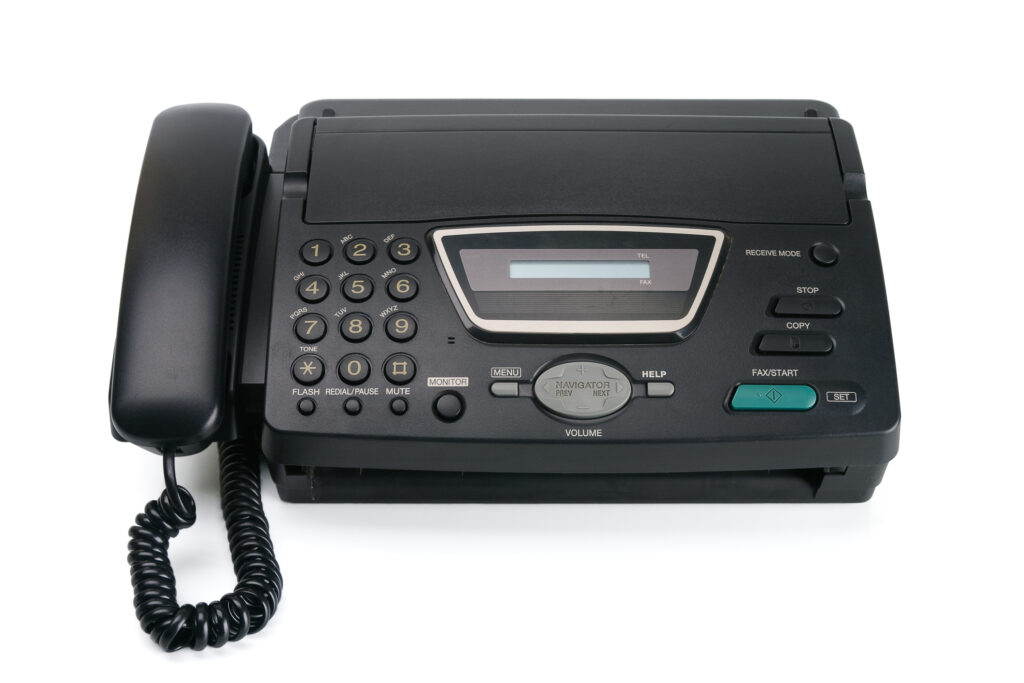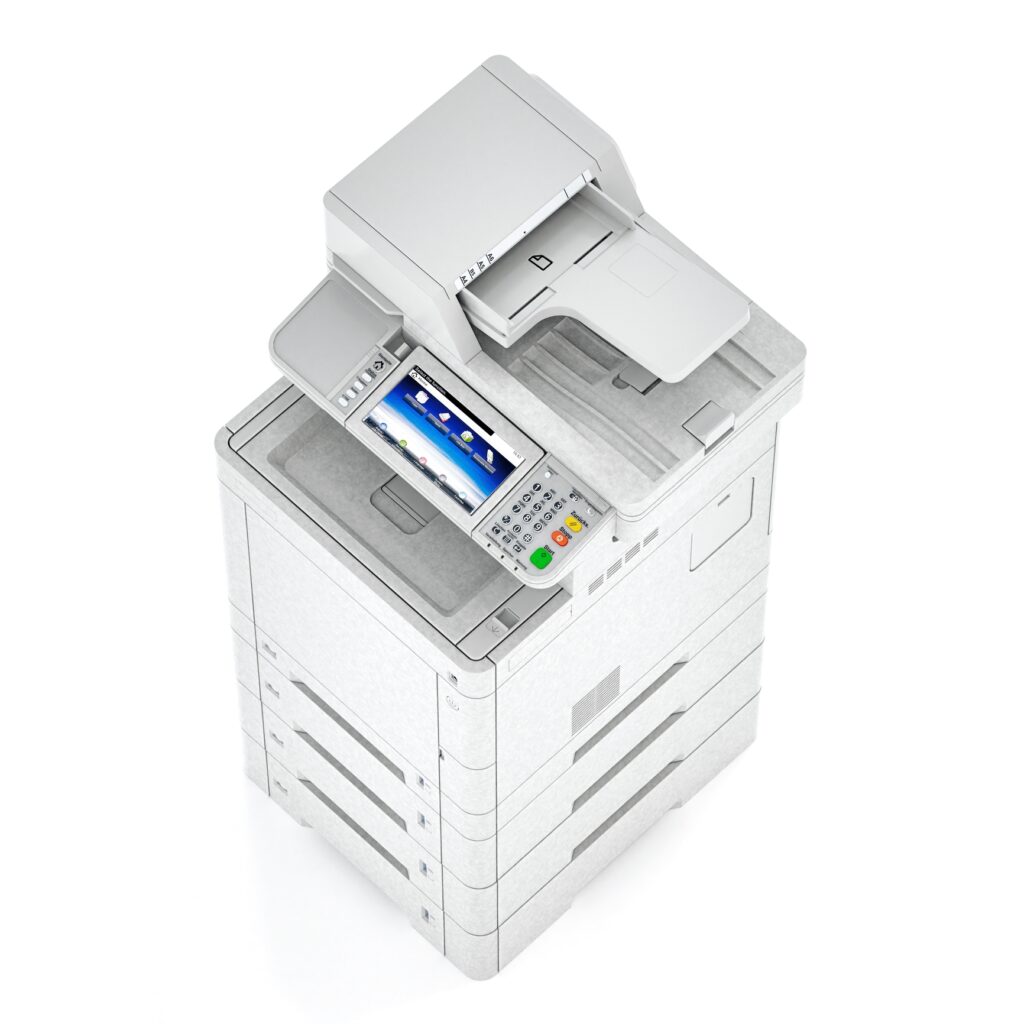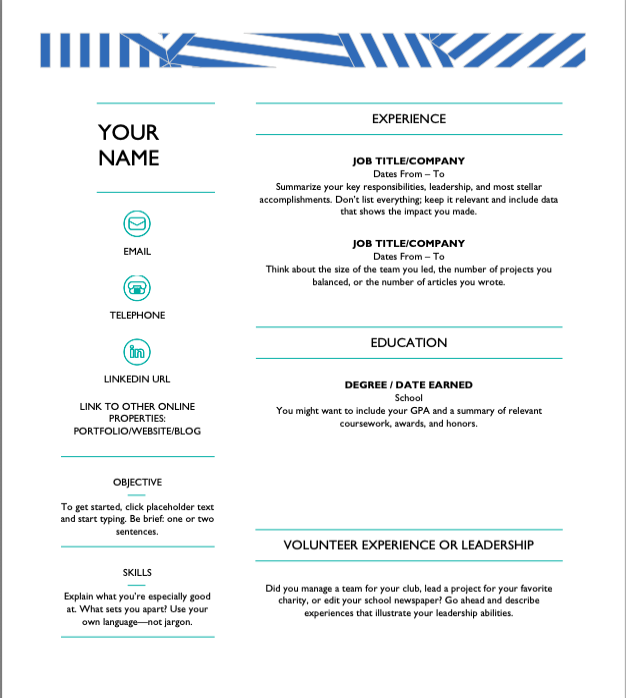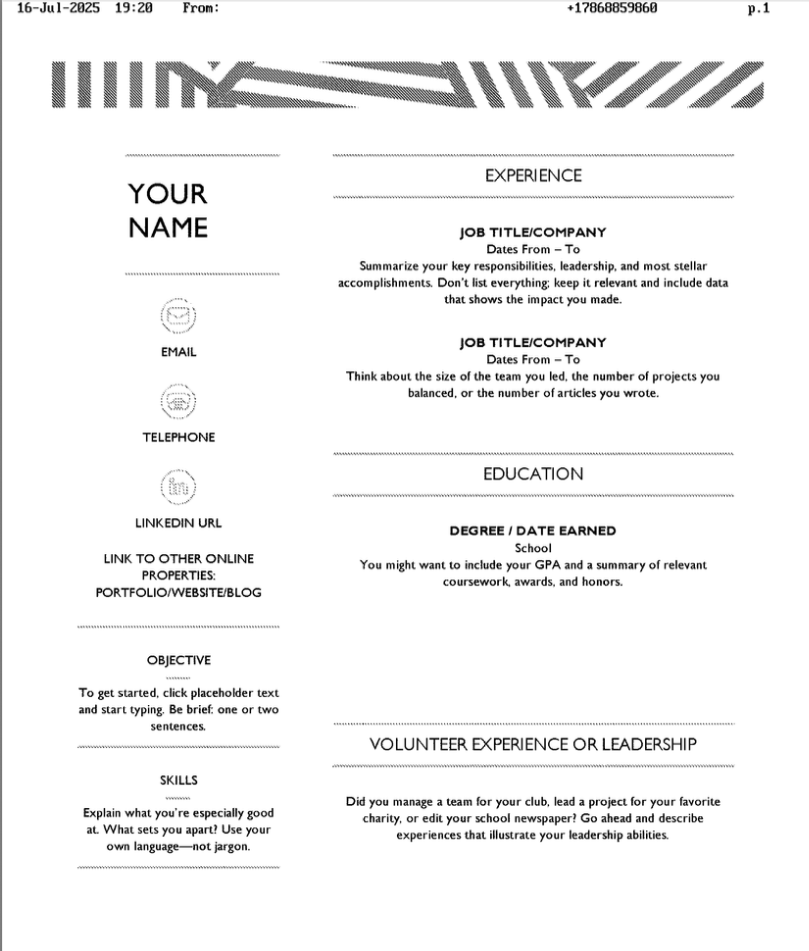Before video calls, text messaging, and smartphones, there was faxing. As one of the first ways to send information electronically, the fax was vital for the development of wired and, eventually, wireless communication. Even in the modern day, the fax is still part of how we send and receive documents. Many institutions such as hospitals, insurance companies, and schools still commonly use the fax.
Quick History of the Fax
The fax, or “facsimile” originates back in 1843 when an inventor named Alexander Bain created the electric printing telegraph. This device could simulate a 2D image based on information from a telegraph. Several iterations of this device followed over the next hundred years or so. By the 1970s, fax machines were finding their way into most business offices. As simple as it seems today, the fax used to be one of the best ways to efficiently run an organization across any distance.
Define Faxing: What Does ‘Fax’ Mean?
People use the noun “fax” to refer to both the machine and the message being transmitted. They also use it as a verb to describe the act of faxing.
The full form of “fax” is “facsimile,” which is defined as “exact copy.” That said, when you make a copy on a printer or copier, you create a “facsimile,” as in a duplicate, but you don’t create a fax on a copier.
When “facsimile” is shortened to “fax,” that refers specifically to a document that is sent by electronic scanning either using a fax machine or an online fax service.
Fax, as a noun, can refer to:
- A fax machine, as in “I am standing in front of the fax, waiting for my documents to finish printing,” or, “The fax is out of paper.”
- The actual papers (facsimiles) are distributed via fax machine, as in, “You’ve got a fax,” or “My doctor sent a fax to the pharmacy.”
Fax, as a verb, refers to:
- To transmit a facsimile electronically via a fax machine or online fax service
Relatedly, efax, or e-fax, refers to electronic faxing.
How Do Faxes Work?
The tl;dr (too long; didn’t read) answer is:
- Fax machines scan documents and convert them into bitmap images made of tiny pixels.
- They transmit the images via telephone lines or online fax services using audio-frequency tones.
- The process allows accurate images to be transmitted.
- Receiving fax machines decode the tones to create a duplicate (facsimile).
The longer explanation:
Documents are the most common piece of information to be sent via fax. When someone faxes a document, a machine (usually a fax machine) scans it and converts it into an image file called a bitmap. Bitmaps are files that, importantly, are just a series of very small colored squares called pixels. Up close, these pixels don’t look like much. But when viewed as a whole, bitmaps have the illusion of a full image.
The special thing about bitmaps is that they can be transmitted electronically in a series of audio-frequency tones over the telephone. These electronic signals give very quick information about each pixel in an image, allowing an accurate recreation of that data to be transmitted remotely, rather than by something like mail.
If the document is transmitted as an image via audio frequency tones, and the document is still a document, then what is a fax?
A fax device can interpret those tones and produce an image based on what it “hears.” Fax machines started off as devices that could print and scan documents. They also had buttons on them for dialing phone numbers, as in the 1970s, ‘80s, and ‘90s, telephones over landlines were still the most common form of communication.
What Does a Fax Look Like?
Larger fax machines can scan, send, and print documents all in one place. They’re generally larger, expensive, and definitely clunky to use. (Ask anyone of a certain age, who was around in the 1980s and 1990s what it was like to use a fax machine. They were generally not user-friendly and often required manuals or special skills to operate!)
Here are three typical fax machines.



Here is what a faxed document looks like.


Online Fax Vs Traditional Fax
Online faxing offers modern, intuitive interfaces that are as easy to use as email. They still function the same as traditional fax machines — you upload your document, and the electronic machine scans it and sends it via phone number. However, with an electronic fax machine, you don’t need a clunky piece of equipment. You need only an internet connection and an electronic device (desktop computer, tablet or smartphone) that can access your document.
We mentioned that phone numbers are required to send documents electronically, but not any phone number can receive a fax. Fax numbers are connected to phone lines that fax machines use to transmit faxes. Some fax numbers also work as phone numbers, but a lot of times in the modern age, the landline will be used just for faxing.
Some Quick Answers to Common Fax-Related Questions
What does “faxed” mean? A document was sent through the fax transmission process. For example, “The doctor faxed your prescription to the pharmacy,” means the physician’s office used either an online efax service or a physical fax machine to send your order to the pharmacy.
What does a fax do? A fax machine scans and transmits messages over telephone lines. An online electronic fax uses the same process, but instead of a machine, you use a computer or internet-connected device to upload, scan and transmit documents.What is fax used for? A fax is used to transmit messages. Typically, in the modern era, a fax is used to transmit sensitive information, especially in healthcare, legal and financial sectors. However, it can also be used in human resources, order fulfillment, international communications, and a host of other uses!
Images:
Large copier/printer/fax from Jumpstory
White desktop fax machine 5386299 | Fax Machine | Igor Lovrinovic | Dreamstime.com
Black desktop fax machine Photo 13100453 | Fax Machine | Avesun | Dreamstime.com

